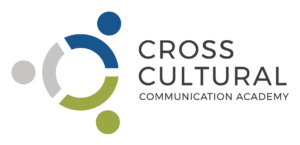How to maximize the potential of international teams:
Harnessing cross-cultural communication and diversity

Martina Jeric-Ruzovits
CROSS CULTURAL COMMUNICATION ACADEMY
In today’s society and business, international teams have become increasingly common, with professionals from diverse cultural backgrounds coming together to achieve shared goals. Leading such a diverse team requires managers to embrace cross-cultural communication and capitalize on cultural diversity as valuable assets. By recognizing the advantages of a multicultural workforce, managers can unlock innovative solutions, enhance productivity, and foster a harmonious work environment. However, it also presents unique challenges that demand specific skills and strategies to overcome obstacles effectively.
Leading a diverse team from a manager’s perspective
Leading a diverse team entails recognizing and appreciating the differences that exist among team members. It involves valuing diverse perspectives, backgrounds, and experiences while creating an inclusive and collaborative work environment. Managers must strive to build strong relationships based on trust, respect, and empathy, allowing individuals to thrive and contribute their best.
This is not always easy, because it requires special skills and tried and tested strategies. I would like to briefly list these.
Essential skills for managers trying to maximize the potential of international teams
- Cultural Intelligence: Managers leading international teams need to develop cultural intelligence, which involves understanding and adapting to different cultural norms, communication styles, and working preferences. It requires sensitivity, open-mindedness, and the ability to navigate through cultural nuances effectively.
- Communication Skills: Effective communication becomes even more crucial when working with diverse teams. Managers must possess excellent verbal and written communication skills, be active listeners, and encourage open dialogue. They should promote clarity, provide feedback constructively, and facilitate cross-cultural understanding to foster effective collaboration.
- Flexibility and Adaptability: Adapting to various work styles, time zones, and cultural practices is vital for managers of international teams. Flexibility allows them to accommodate diverse needs, allocate responsibilities appropriately, and create an inclusive environment that values individual contributions.
What obstacles may occur while maximizing the potential of international teams?
There are rarely situations in business life that are only associated with opportunities. Where there is light, there is also shadow – here in the form of potential obstacles. And it is precisely these that I would like to highlight here.
- Language Barriers: Differences in language proficiency can impede effective communication within the team. Misunderstandings, misinterpretations, and ambiguity may arise, leading to decreased productivity and cohesion.
- Varying Communication Styles: Different cultures have distinct communication styles, such as direct or indirect, high-context or low-context. These variations can lead to miscommunication, confusion, and conflict if not acknowledged and addressed.
- Conflicting Work Practices: Each culture may have its own work practices, decision-making processes, and approaches to problem-solving. These differences can cause clashes, misunderstandings, and resistance to change, affecting team dynamics and performance.
How can managers overcome these obstacles?
Overcoming intercultural hurdles is not always easy. The first and most important step is to be aware of these obstacles and want to solve them. Having reached this point, these considerations will help you.
- Language Support: Managers can encourage language learning initiatives within the team, provide language resources, and facilitate language exchange programs. Encouraging clarity, patience, and active listening can help mitigate language barriers.
- Cultural Awareness Training: Organizing cultural awareness workshops or training sessions can enhance team members’ understanding of cultural differences and promote empathy and tolerance. This education can improve cross-cultural communication and facilitate smoother collaboration.
- Clear Communication Guidelines: Establishing clear communication guidelines, such as preferred communication channels, meeting structures, and expectations, helps minimize misunderstandings. Encouraging team members to ask for clarification and providing feedback regularly can bridge gaps caused by differing communication styles.
- Emphasizing Team Building: Engaging in team-building activities, both virtual and in-person when possible, fosters a sense of unity and understanding among team members. Celebrating diversity and creating opportunities for personal connections can strengthen relationships and improve collaboration.
A management summary on leading an international team
Leading an international team offers managers an opportunity to harness the power of cross-cultural communication and cultural diversity. By leveraging the unique strengths and perspectives that each team member brings, managers can drive innovation, enhance problem-solving capabilities, and create a vibrant and inclusive work environment. However, it is crucial for managers to develop cultural intelligence, strong communication skills, and a flexible leadership style. By actively addressing potential obstacles and implementing strategies to overcome them, managers can unlock the full potential of their diverse teams, resulting in increased productivity and success in the global marketplace.
